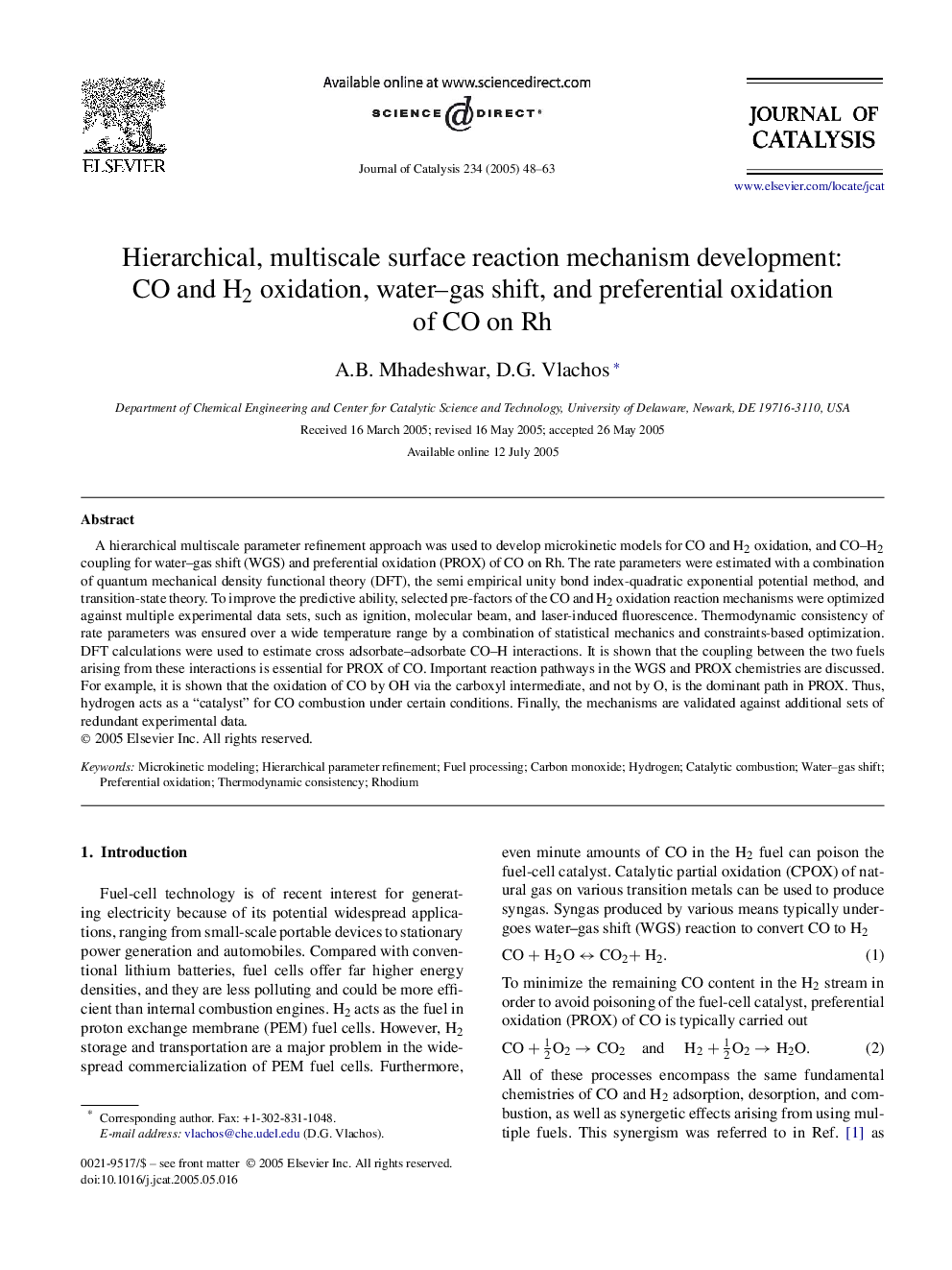| Article ID | Journal | Published Year | Pages | File Type |
|---|---|---|---|---|
| 10244688 | Journal of Catalysis | 2005 | 16 Pages |
Abstract
A hierarchical multiscale parameter refinement approach was used to develop microkinetic models for CO and H2 oxidation, and CO-H2 coupling for water-gas shift (WGS) and preferential oxidation (PROX) of CO on Rh. The rate parameters were estimated with a combination of quantum mechanical density functional theory (DFT), the semi empirical unity bond index-quadratic exponential potential method, and transition-state theory. To improve the predictive ability, selected pre-factors of the CO and H2 oxidation reaction mechanisms were optimized against multiple experimental data sets, such as ignition, molecular beam, and laser-induced fluorescence. Thermodynamic consistency of rate parameters was ensured over a wide temperature range by a combination of statistical mechanics and constraints-based optimization. DFT calculations were used to estimate cross adsorbate-adsorbate CO-H interactions. It is shown that the coupling between the two fuels arising from these interactions is essential for PROX of CO. Important reaction pathways in the WGS and PROX chemistries are discussed. For example, it is shown that the oxidation of CO by OH via the carboxyl intermediate, and not by O, is the dominant path in PROX. Thus, hydrogen acts as a “catalyst” for CO combustion under certain conditions. Finally, the mechanisms are validated against additional sets of redundant experimental data.
Keywords
Related Topics
Physical Sciences and Engineering
Chemical Engineering
Catalysis
Authors
A.B. Mhadeshwar, D.G. Vlachos,
